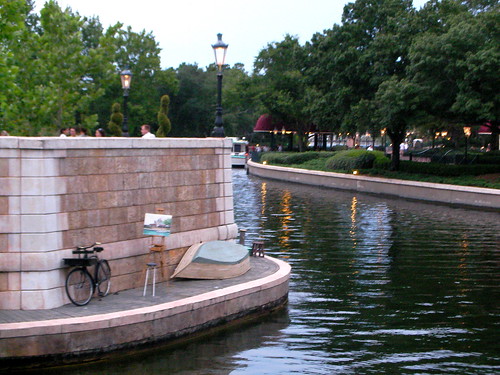At the recent NASFAA conference, I was wandering around Epcot after sessions one day, and noticed this in the International Gateway:
This is on the side of a bridge at the France pavilion facing the boat dock. Maybe 1 in 100 visitors to Epcot will actually see the side of the bridge from this angle, yet Disney saw fit to put a small easel with a half finished boat dock painting and a bicycle on this little ledge.
This is exactly what I’d expect to see on the banks of the Seine.
This is why Disney is the master of the experience. We all strive to deliver an experience of some kind to our customers. Sometimes we even deliver a remarkable experience. Disney takes it to the next level by providing layered experiences so that, for those looking for breaks in the illusion, they find instead reinforcements of the experience.
What would your sales and marketing look like if at every turn, your customers’ experiences were reinforced, rather than diminished?
This is something that came up in a roundabout way at the MITX panel discussion today that I had the pleasure of being a part of, along with Aaron Strout, Chris Brogan, and Brian Halligan, in a discussion of what makes great design.
Great design is more than just sales and marketing. Great design is emotion. When you pick up an iPod, when you look at a beautiful car, it inspires an emotional, visceral response. Your rational mind catches up later, but with great design, you feel it first.
Disney’s touches – which could have been omitted – demonstrate great design, because their attention to detail creates that emotional response. You FEEL like you’re in Paris, or what you’d imagine Paris is like.
I strive in my own work to eventually achieve Imagineer-like skills. Not there yet, but working harder at it.
How do you perceive design? How important are the little things to you?

Leave a Reply